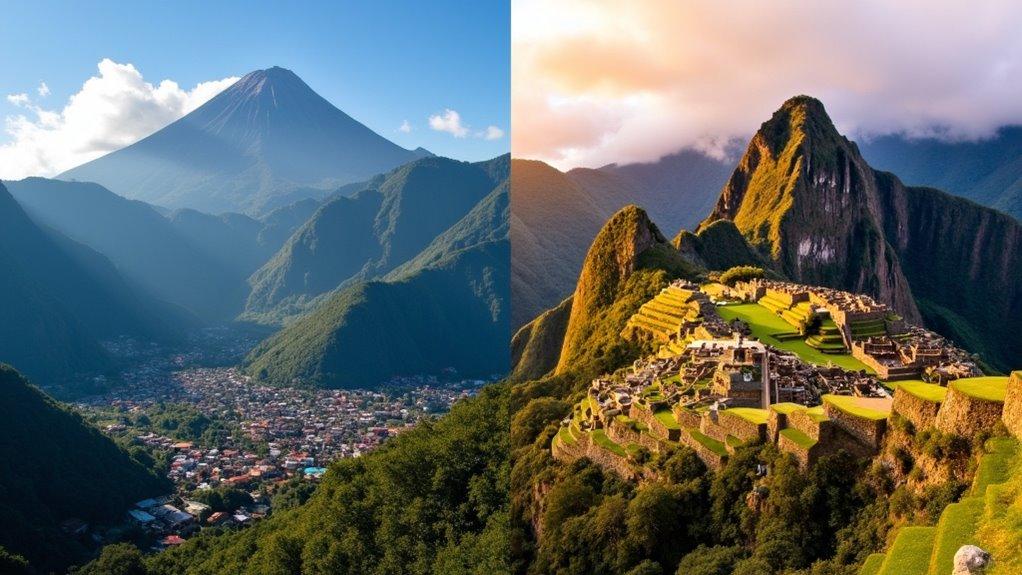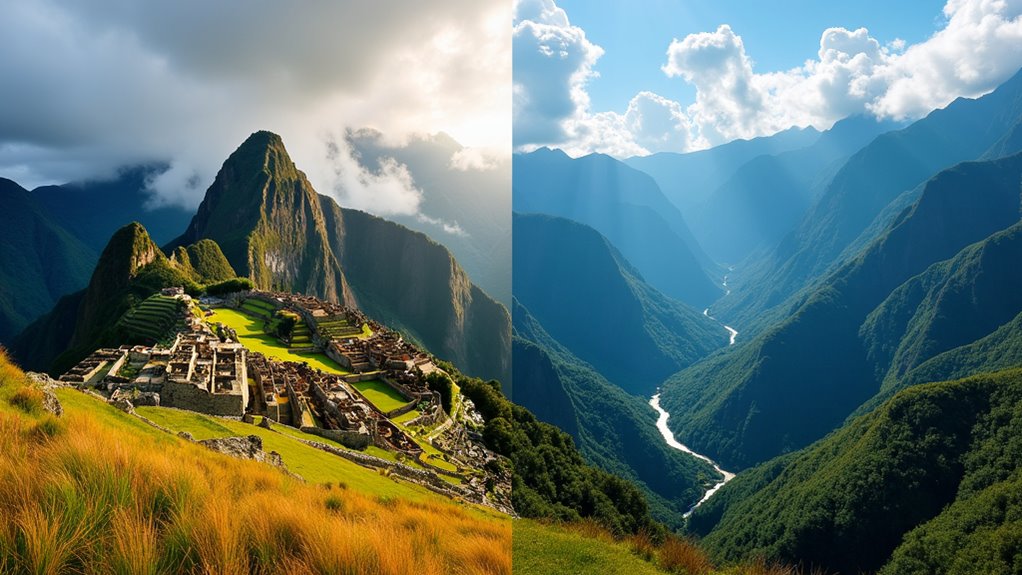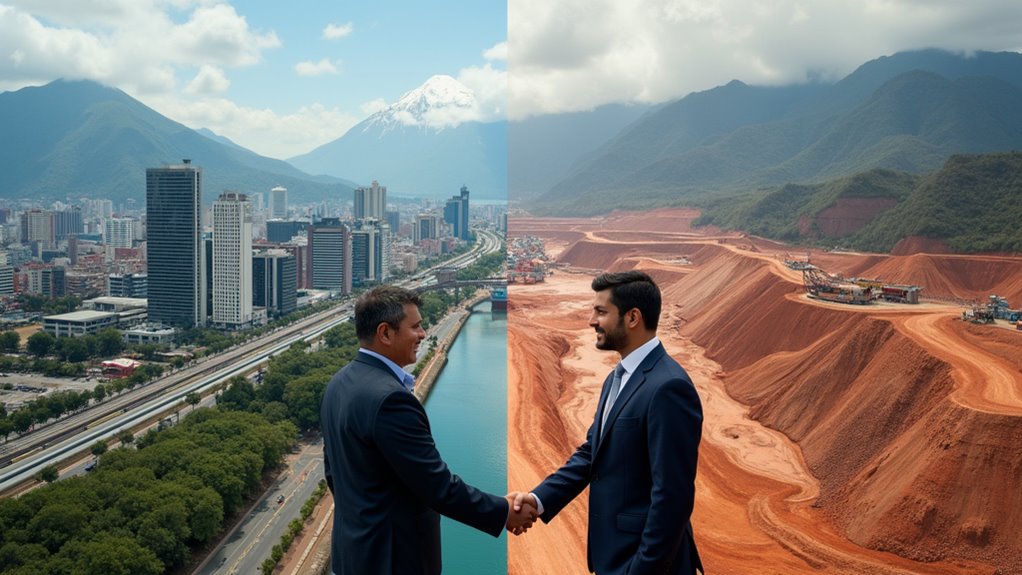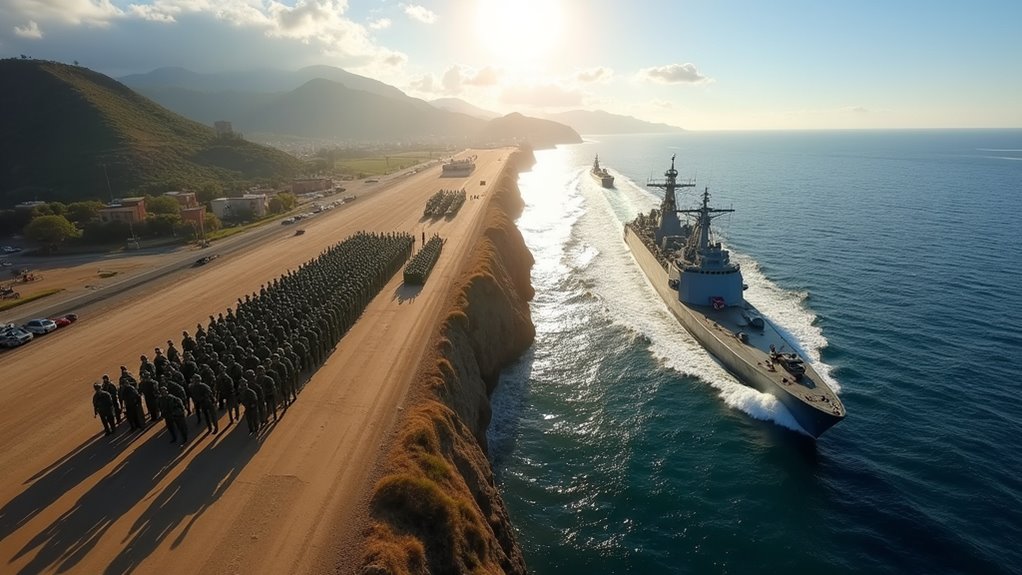Physical Address
304 North Cardinal St.
Dorchester Center, MA 02124
Physical Address
304 North Cardinal St.
Dorchester Center, MA 02124

Peru or Ecuador? Pristine landscapes and ancient wonders await, but which Andean gem truly deserves your precious vacation days?
Ecuador and Peru offer distinct experiences despite their shared Andean geography. Peru boasts Machu Picchu, globally renowned cuisine, and stronger economic growth, while Ecuador features the Galapagos Islands, more accessible landscapes, and vibrant indigenous cultures. Peru’s larger size requires more travel time between destinations, whereas Ecuador’s compact nature allows easier exploration. Your preference depends on whether you value archaeological wonders and culinary fame or biological diversity and convenient travel. The comparison goes far beyond surface-level differences.

While both countries boast impressive natural diversity, Peru and Ecuador offer distinctly different geographic experiences. Peru’s landscape portfolio is more extensive, with the Amazon rainforest covering 60% of the country compared to Ecuador’s 30%.
You’ll find Peru positioned along the Ring of Fire, making it more volcanically active with frequent seismic events.
Ecuador counters with the extraordinary Galapagos Islands, home to unique endemic species you won’t find anywhere else. Ecuador also features Cotopaxi in the Andes, which is the highest active volcano in the world.
If altitude matters to you, Peru’s Sacred Valley sits higher than Ecuador’s Andean regions.
Both countries feature stunning river systems throughout their Amazon territories, with Ecuador hosting Cuyabeno and Yasuni reserves, while Peru offers Manu and Puerto Maldonado.
For sheer variety, Peru delivers beaches, deserts, jungles, canyons, and cloud forests in one destination.
Beyond the stunning landscapes, the cultural tapestry of Ecuador and Peru offers travelers equally compelling reasons to visit. Both countries share Spanish colonial influence evident in their UNESCO-protected historic centers with cobblestone streets and ornate churches.
While landscapes captivate, Ecuador and Peru’s rich cultural heritage equally beckons travelers to explore their colonial treasures.
You’ll find Ecuador abundant in vibrant indigenous experiences, while Peru showcases its renowned Incan heritage at Machu Picchu and Cusco. Ecuador’s Ingapirca reveals interesting pre-Columbian ruins with Incan influences. Peru’s larger size accommodates four times more geographical and cultural diversity than Ecuador.
Your taste buds will delight in Ecuador’s locro de papas and llapingachos, while Peru’s globally acclaimed cuisine features ceviche and lomo saltado. Both culinary traditions blend indigenous, Spanish and African influences using local ingredients like potatoes and quinoa.
Throughout your journey, you’ll encounter active community preservation efforts, colorful festivals, and traditional artisans practicing ancient crafts like weaving and pottery.

When considering investment or business expansion in South America, understanding the economic landscapes of Ecuador and Peru reveals distinct opportunities and challenges.
Peru shows stronger growth potential at 2.5% annually through 2026, with mining and infrastructure driving development, particularly in urban coastal regions.
Ecuador’s growth remains positive but sluggish.
For trade opportunities, Peru’s exports to Ecuador are growing at 5.69% annually, while Ecuador’s exports to Peru have declined by 9.5% annually since 2018.
Peru offers a more complex economy (ranked 90th globally) compared to Ecuador (104th).
You’ll find investment potential in Peru’s mining sector and Ecuador’s energy industry, though policy uncertainty may impact timing in both markets. Peru has transitioned from military rule to democracy in 1980, creating a more stable investment environment despite historical economic challenges.
Infrastructure development in Peru presents additional long-term growth opportunities.
Moving from business considerations to the practicalities of visiting these South American nations, travelers need to weigh key differences in their tourism landscapes. Ecuador’s compact size means quicker, cheaper domestic flights and easier intercity travel, perfect for multi-destination trips.
Peru’s larger geography requires more time between locations but offers more developed infrastructure in remote areas like the Amazon.
Both countries boast spectacular Andean mountain experiences—Peru with Rainbow Mountain and Salcantay Trek, Ecuador with Chimborazo and Cotopaxi National Park. The Andes mountain range provides breathtaking scenery and cultural experiences in both countries, stretching from Venezuela down to Argentina.
For beaches, you’ll find excellent surfing options in both nations, though Ecuador’s coastal spots are typically more accessible.
Peru clearly dominates in archaeological tourism with Machu Picchu being a global icon, while Ecuador compensates with affluent colonial cities and historical sites.

While rarely discussed in travel guides, the military capabilities of Ecuador and Peru reveal significant differences in regional influence and geopolitical positioning. Peru maintains a clear military advantage with approximately 95,000 active personnel and a Global Firepower ranking of 49th (Power Index: 0.8588).
Ecuador ranks lower with a Power Index of 1.3021.
Peru’s navy is particularly robust with 25,000 personnel and various vessels patrolling its extensive Pacific coastline.
Both nations participate in regional organizations like UNASUR, though it’s currently inactive.
The countries face similar security challenges including organized crime and border security issues.
You’ll notice Ecuador has developed closer defense relationships with the United States, while Peru maintains more independent military positioning despite some American involvement.
This comparison format provides a side-by-side analysis of their conventional warfare capabilities for 2025.
You’ve spent hours researching both countries, only to realize the “definitive comparison” isn’t so definitive after all. Peru’s ancient Inca sites contrast with Ecuador’s Galápagos wonders. Each offers distinctive cuisines, varied economies, and unique travel experiences. While neither ranks as a military powerhouse, they’ve carved different niches in regional politics. The irony? Your perfect destination depends entirely on what you’re looking for.